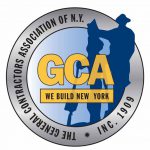In a decision dated May 4, 2018, the Hon. Gerald Lebovits granted our clients, the City of New York and the New York City Department of Environmental Protection, summary judgment dismissing all of the plaintiff’s claims as against the City and the DEP and denying the plaintiff’s motion for summary judgment on his causes of action pursuant to Labor Law §§240(1) and 241(6). The plaintiff, a Local 638 steamfitter employed by Skanska Mechanical and Structural, Inc. was allegedly struck by an inadequately secured roller hanger pipe saddle in the neck, which fell from above. The incident allegedly occurred on October 2, 2011, while the plaintiff was working at the North River Sewage Treatment Plant located in Manhattan. Judge Lebovits determined that Labor Law §240(1) did not apply to the circumstances of this accident because the pipe saddle was part of the building’s permanent structure. The Court accepted our argument that the pipe saddle is not the type of safety device which is intended to protect workers from a gravity-related hazard, so the failure of the pipe saddle did not implicate the protections of the statute. In denying the plaintiff’s summary judgment motion, the Court accepted our argument that the failure of the tack welding (which caused the pipe saddle to fall) did not implicate the statute for the same reason. Regarding the plaintiff’s Labor Law §241(6) claim, the plaintiff only opposed the dismissal of two Industrial Code Rules. The Court held that Rule 23-1.7(a)(1) (“Every place where persons are required to work or pass that is normally exposed to falling material or objects shall be provided with suitable overhead protection…”) did not apply to the accident because, although there was falling debris from the demolition work, the plaintiff was not struck by this debris but by the pipe saddle that was not adequately tack welded, i.e., the pipe saddles were not the type of falling objects that persons were normally exposed to and for which protection was required. The Court held that Rule 23-3.2(b), which applies to the protection of adjacent structures during demolition, did not apply because the plaintiff was injured by the pipe saddle, not an adjacent structure. Finally, the Court dismissed the plaintiff’s causes of action for common law negligence and violation of Labor Law §200 because there was no evidence that the defendants had notice of the defective condition and the Court accepted our argument that insufficient tack welding constituted a latent defect which did not give rise to liability. The Court also noted that none of the defendants would be liable under the means and methods analysis because the defendants were not in charge of fall protection at the project.
Michael Djuric v. City of New York et al., Index No. 151057/12 (N.Y. Co. Sup. Ct., May 4, 2018)








